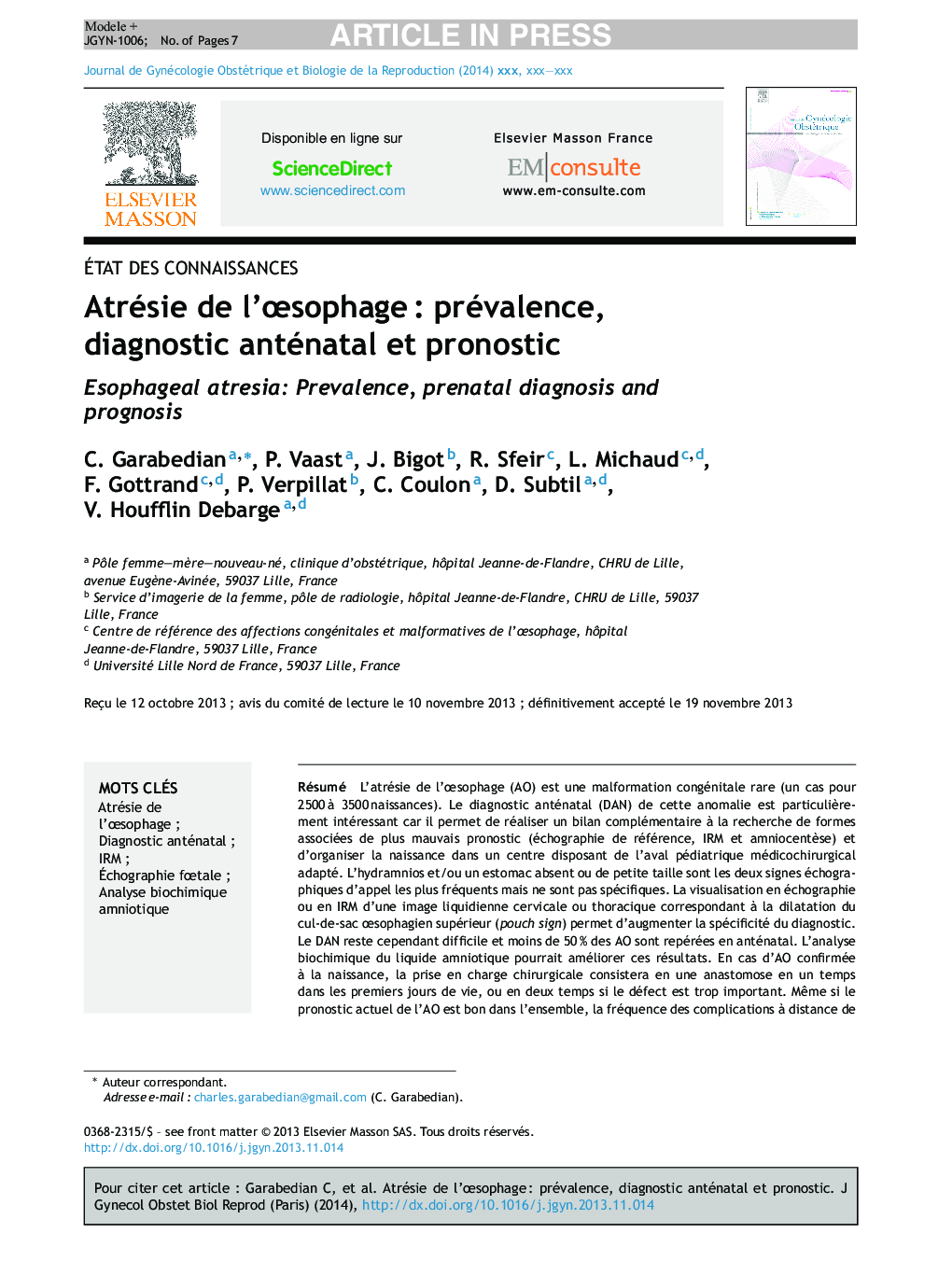| Article ID | Journal | Published Year | Pages | File Type |
|---|---|---|---|---|
| 3272494 | Journal de Gynécologie Obstétrique et Biologie de la Reproduction | 2014 | 7 Pages |
Abstract
Esophageal atresia (EA) is a rare congenital malformation (1Â in 2,500Â to 3,500Â births). Prenatal diagnosis (PN) is particularly interesting allowing search for associated malformations related to worse prognosis forms (reference ultrasound, MRI and amniocentesis) and planning the birth in an adapted medico-surgical center. Diagnosis of EA is usually suspected because of indirect and non-specific signs: association of polyhydramnios and absent or small stomach bubble. The visualization in ultrasound or MRI of cervical or thoracic fluid image corresponding to the expansion of the bottom of upper esophageal (“pouch sign”) increases the specificity of diagnosis. However, prenatal diagnosis remains difficult and less than 50Â % of EA are diagnosed prenatally. Biochemical analysis could improve these results. If EA is confirmed at birth, surgical management consists in a primary end-to-end anastomosis in first days of life, or in two-steps surgery if the defect is too large. Although current prognosis of EA is good, frequency of surgical complications and esophageal lesions secondary to gastroesophageal reflux justify a systematic and multidisciplinary extended follow-up.
Keywords
Related Topics
Health Sciences
Medicine and Dentistry
Endocrinology, Diabetes and Metabolism
Authors
C. Garabedian, P. Vaast, J. Bigot, R. Sfeir, L. Michaud, F. Gottrand, P. Verpillat, C. Coulon, D. Subtil, V. Houfflin Debarge,
